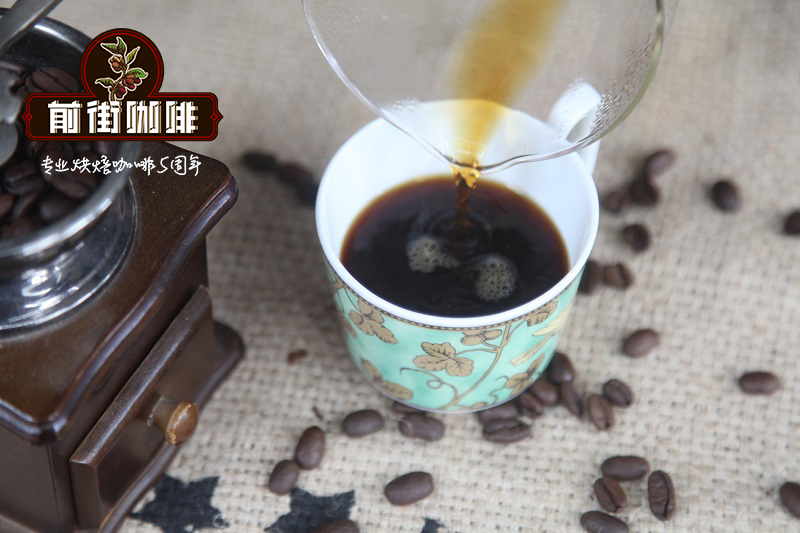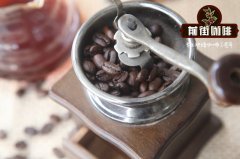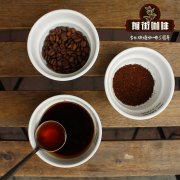Columbia sweet orange FNC how to grind coffee beans by hand _ how can Colombian coffee not be sour

Professional coffee knowledge exchange More coffee bean information Please pay attention to coffee workshop (Weixin Official Accounts cafe_style)
Cauca coffee producing area is located in Cauca province, named after Cauca River, is one of the important fine coffee producing areas in Colombia.
Provincial capital: Popayán
Population: approximately 1,368,000
Position: 00º58 '54'--- 03º19 '04' N East 75º47 '36'--- 77º57 '05'
Area: 29308 km2 (approximately 2.56% of Colombia)
Neighboring regions: North-Valle del Cauca, East-Tolima, Huila, Caquita, South-Nerino, Putumayo, West-Pacific Ocean
Coca coffee is grown at an average altitude of 1758m, up to a maximum of 2100m. The Cauca coffee-growing area is located in the north of Patía and surrounded by the Puracé volcano, the Colombia plateau, and the western mountains facing the Pacific Ocean and the southwest region. Good conditions for coffee cultivation are available, as follows:
- Surrounded by high mountains, blocking the air flow and moisture from the Pacific Ocean, as well as the southern trade wind, forming a stable climate condition, the climate and temperature conditions in this area do not change much throughout the year.
- Mainly volcanic soil
- Due to its proximity to the equator, the sunshine is relatively abundant and lasting all year round.
Cauca precipitation characteristics
Cauca, like other coffee-producing areas in southern Colombia, has a unimodal precipitation pattern, with the rainy season usually concentrated in the second quarter of the year, followed by the dry season, which usually ends in August and September (see Figure 1). The arrival of the rainy season also brings about the arrival of the coffee season at the same time, followed by a more concentrated harvest season in the first quarter of the following year in most coffee producing areas of Cauca.
This precipitation pattern is closely related to sunshine intensity and cloudless weather conditions in subsequent years (see Figure 2), with water loss in July and August, which is conducive to the arrival of the flowering season.
Key factor--temperature difference
The biggest difference in climate between Cauca and the rest of Colombia is probably the range of temperature differences, with daily averages of 11 ° C and daytime averages of 18 ° C.
The temperature difference between day and night is a key factor affecting the quality of coffee. Low temperatures at night and relatively high altitudes slow the pace of coffee growth, making coffee beans in this area have better acidity and unique sweetness.
flavor characteristics
The above conditions make the coffee in this producing area have a very good sense of balance and stable quality. In addition, due to the relatively high altitude and low average temperature in this area, Arabica coffee trees grown in Cauca retain more acidity and sweetness in the coffee beans, resulting in a mild sour and sweet flavor of coffee. "Coca Coffee" has a very characteristic sweet flavor, manifested in: rich floral, caramel sweet, bright acid, medium body, well-balanced, clean, soft, with obvious sweet and floral.
How to make Colombia coffee?
Front Street Coffee Hand Brewing Reference: Weigh 15g of [sweet orange] coffee powder, pour it into the grinder and grind it moderately. The ground particles are slightly coarser than salt. We use BG grinder scale 5R (standard sieve pass rate 60%), water temperature 89 ℃, V60 filter cup extraction, recommended powder water ratio 1:15.
The hot water in the hand-made pot draws a circle clockwise with the center of the filter cup as the center. The timing starts when brewing. The coffee is brewed to 30g in 15 seconds. Then stop filling water. When the time reaches 1 minute, fill water for the second time. When injecting water for the second time, as before, draw a circle clockwise around the center of the filter cup, and the water flow should not rush to the place where the coffee powder is connected with the filter paper, so as to avoid channel effect.
Coffee powder to the outermost circle to leave a circle, and then a circle to the middle brewing, 2 minutes and 20 seconds, coffee to 220g, brewing coffee is complete.
| Japanese ice hand rush [sweet orange]
Front Street Coffee Ice Hand Chong [Sweet Orange] Reference:
Colombia coffee [sweet orange], light medium roast, BG grinder scale 5M (standard sieve pass rate 67%)
20 grams of powder, 150 grams of ice, 150 grams of hot water. The water temperature is 90℃ higher than that recommended for normal hand flushing, 1℃ higher than that recommended for normal hand flushing. The normal grinding of small Fuji is 3.5 scales, and the ice hand flushing is slightly finer by half a grid-small Fuji is 3 scales. The recommended powder (water + ice) ratio is 1:15.
Steaming water 40 grams, steaming time 30 seconds.
Water injection in stages, 60 grams of water in the first stage and 40 grams of water in the second stage. Use a relatively fine but high water injection column, stir the impact vigorously, so that the coffee powder fully tumbling, but be careful that the liquid level is not too high, do not rush to the edge of the filter paper.
The whole extraction time is also about 2 minutes and a half (with the normal extraction time of 20 grams of powder close).
END
Important Notice :
前街咖啡 FrontStreet Coffee has moved to new addredd:
FrontStreet Coffee Address: 315,Donghua East Road,GuangZhou
Tel:020 38364473
- Prev

Is it a love elixir or poison to wash coffee beans in the red bourbon of the Chateau Saint-Tuareo, Colombia?
Professional coffee knowledge exchange more coffee bean information please follow the coffee workshop (Wechat official account cafe_style) Colombia San Tuareo Manor love medicine Cauca production area, 1950-2050 meters, washing treatment, red bourbon, medium-shallow baked fruit juice, orange, flower, apricot, red apple, honey, black tea flavor balanced elegant, clean and smooth taste, tail rhyme flowers and fruits
- Next

Guji producing area of Ethiopia | Solar treatment of native species of Dasaya Tasha / Zifengling G1
Professional coffee knowledge exchange more coffee bean information please follow the coffee workshop (Wechat official account cafe_style) Ethiopia Guji producing area | Solar treatment Dasaya Tasha / Zifengling G1 native species flavor? The original text of Dasaya in Ethiopia is Dawala Samayawi, which means purple wind chimes! The bean, like its name, is constantly reminiscent of purple when drinking.
Related
- Detailed explanation of Jadeite planting Land in Panamanian Jadeite Manor introduction to the grading system of Jadeite competitive bidding, Red bid, Green bid and Rose Summer
- Story of Coffee planting in Brenka region of Costa Rica Stonehenge Manor anaerobic heavy honey treatment of flavor mouth
- What's on the barrel of Blue Mountain Coffee beans?
- Can American coffee also pull flowers? How to use hot American style to pull out a good-looking pattern?
- Can you make a cold extract with coffee beans? What is the right proportion for cold-extracted coffee formula?
- Indonesian PWN Gold Mandrine Coffee Origin Features Flavor How to Chong? Mandolin coffee is American.
- A brief introduction to the flavor characteristics of Brazilian yellow bourbon coffee beans
- What is the effect of different water quality on the flavor of cold-extracted coffee? What kind of water is best for brewing coffee?
- Why do you think of Rose Summer whenever you mention Panamanian coffee?
- Introduction to the characteristics of authentic blue mountain coffee bean producing areas? What is the CIB Coffee Authority in Jamaica?

